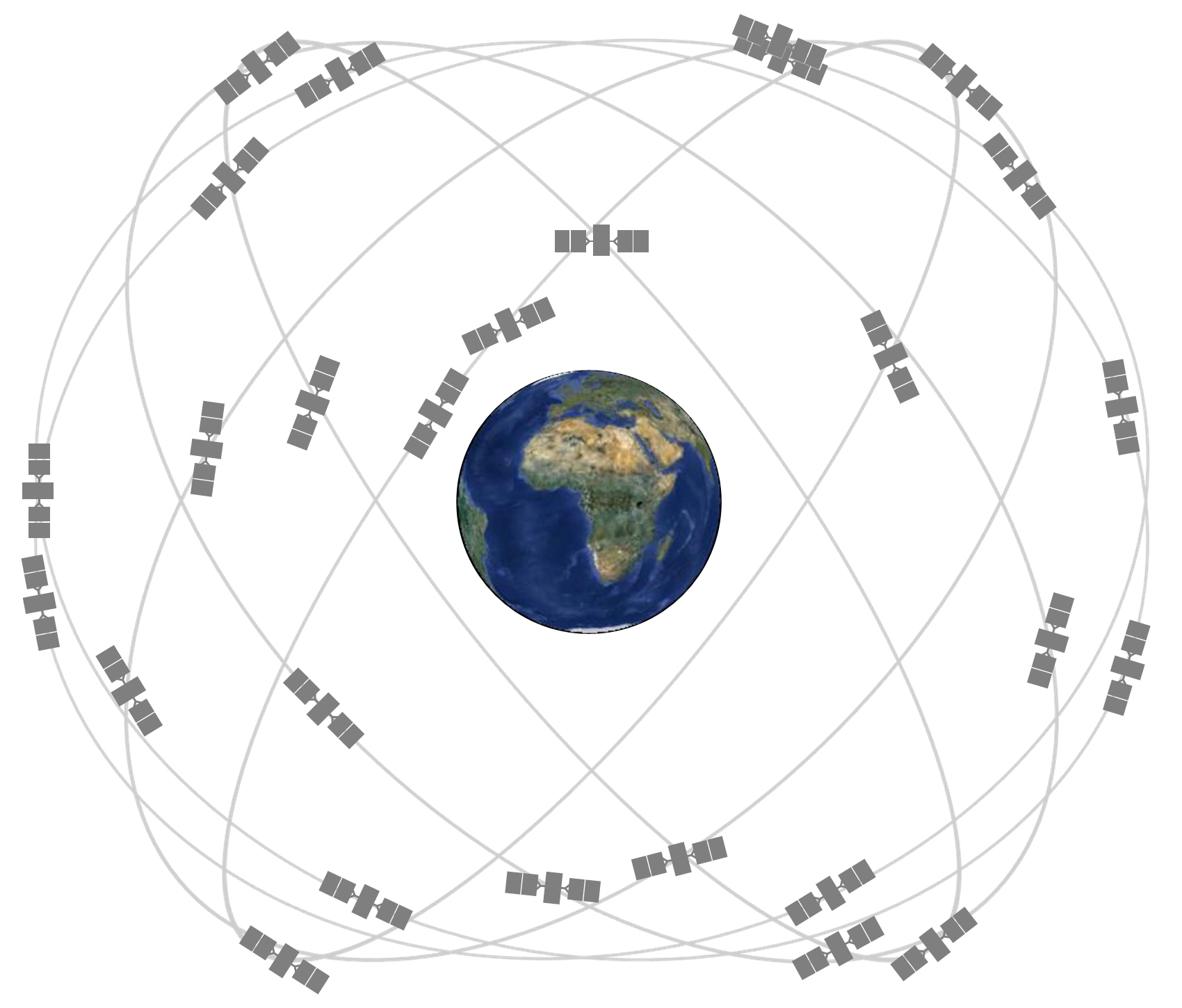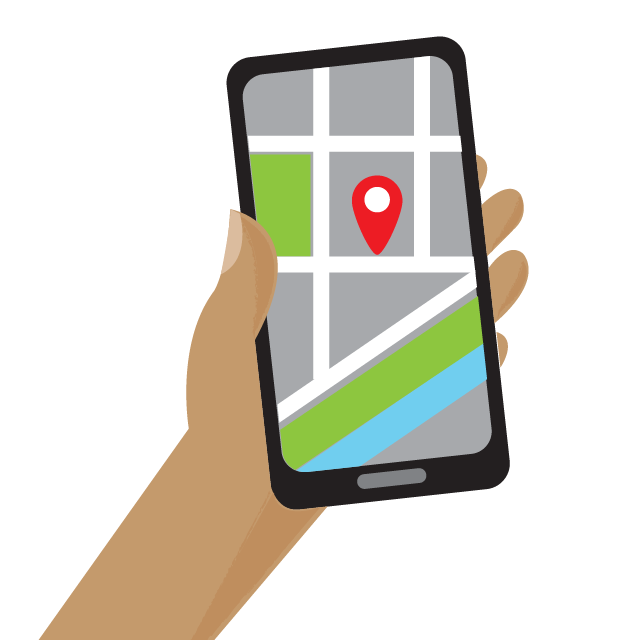Is Time Travel Possible?
Is Time Travel Possible?
Although humans can’t hop into a time machine and go back in time, we do know that clocks on airplanes and satellites travel at a different speed than those on Earth.
We all travel in time! We travel one year in time between birthdays, for example. And we are all traveling in time at approximately the same speed: 1 second per second.
We typically experience time at one second per second. Credit: NASA/JPL-Caltech
NASA’s space telescopes also give us a way to look back in time. Telescopes help us see stars and galaxies that are very far away. It takes a long time for the light from faraway galaxies to reach us. So, when we look into the sky with a telescope, we are seeing what those stars and galaxies looked like a very long time ago.
However, when we think of the phrase “time travel,” we are usually thinking of traveling faster than 1 second per second. That kind of time travel sounds like something you’d only see in movies or science fiction books. Could it be real? Science says yes!

This image from the Hubble Space Telescope shows galaxies that are very far away as they existed a very long time ago. Credit: NASA, ESA and R. Thompson (Univ. Arizona)
How do we know that time travel is possible?
More than 100 years ago, a famous scientist named Albert Einstein came up with an idea about how time works. He called it relativity. This theory says that time and space are linked together. Einstein also said our universe has a speed limit: nothing can travel faster than the speed of light (186,000 miles per second).
Einstein’s theory of relativity says that space and time are linked together. Credit: NASA/JPL-Caltech
What does this mean for time travel? Well, according to this theory, the faster you travel, the slower you experience time. Scientists have done some experiments to show that this is true.
For example, there was an experiment that used two clocks set to the exact same time. One clock stayed on Earth, while the other flew in an airplane (going in the same direction Earth rotates).
After the airplane flew around the world, scientists compared the two clocks. The clock on the fast-moving airplane was slightly behind the clock on the ground. So, the clock on the airplane was traveling slightly slower in time than 1 second per second.
Can we use time travel in everyday life?
We can’t use a time machine to travel hundreds of years into the past or future. That kind of time travel only happens in books and movies. But the math of time travel does affect the things we use every day.
For example, we use GPS satellites to help us figure out how to get to new places. (Check out our video about how GPS satellites work.) NASA scientists also use a high-accuracy version of GPS to keep track of where satellites are in space. But did you know that GPS relies on time-travel calculations to help you get around town?
GPS satellites orbit around Earth very quickly at about 8,700 miles (14,000 kilometers) per hour. This slows down GPS satellite clocks by a small fraction of a second (similar to the airplane example above).

GPS satellites orbit around Earth at about 8,700 miles (14,000 kilometers) per hour. Credit: GPS.gov
However, the satellites are also orbiting Earth about 12,550 miles (20,200 km) above the surface. This actually speeds up GPS satellite clocks by a slighter larger fraction of a second.
Here’s how: Einstein’s theory also says that gravity curves space and time, causing the passage of time to slow down. High up where the satellites orbit, Earth’s gravity is much weaker. This causes the clocks on GPS satellites to run faster than clocks on the ground.
The combined result is that the clocks on GPS satellites experience time at a rate slightly faster than 1 second per second. Luckily, scientists can use math to correct these differences in time.

If scientists didn’t correct the GPS clocks, there would be big problems. GPS satellites wouldn’t be able to correctly calculate their position or yours. The errors would add up to a few miles each day, which is a big deal. GPS maps might think your home is nowhere near where it actually is!
In Summary:
Yes, time travel is indeed a real thing. But it’s not quite what you’ve probably seen in the movies. Under certain conditions, it is possible to experience time passing at a different rate than 1 second per second. And there are important reasons why we need to understand this real-world form of time travel.
Is Time Travel Possible?
Although humans can’t hop into a time machine and go back in time, we do know that clocks on airplanes and satellites travel at a different speed than those on Earth.
We all travel in time! We travel one year in time between birthdays, for example. And we are all traveling in time at approximately the same speed: 1 second per second.
We typically experience time at one second per second. Credit: NASA/JPL-Caltech
NASA’s space telescopes also give us a way to look back in time. Telescopes help us see stars and galaxies that are very far away. It takes a long time for the light from faraway galaxies to reach us. So, when we look into the sky with a telescope, we are seeing what those stars and galaxies looked like a very long time ago.
However, when we think of the phrase “time travel,” we are usually thinking of traveling faster than 1 second per second. That kind of time travel sounds like something you’d only see in movies or science fiction books. Could it be real? Science says yes!

This image from the Hubble Space Telescope shows galaxies that are very far away as they existed a very long time ago. Credit: NASA, ESA and R. Thompson (Univ. Arizona)
How do we know that time travel is possible?
More than 100 years ago, a famous scientist named Albert Einstein came up with an idea about how time works. He called it relativity. This theory says that time and space are linked together. Einstein also said our universe has a speed limit: nothing can travel faster than the speed of light (186,000 miles per second).
Einstein’s theory of relativity says that space and time are linked together. Credit: NASA/JPL-Caltech
What does this mean for time travel? Well, according to this theory, the faster you travel, the slower you experience time. Scientists have done some experiments to show that this is true.
For example, there was an experiment that used two clocks set to the exact same time. One clock stayed on Earth, while the other flew in an airplane (going in the same direction Earth rotates).
After the airplane flew around the world, scientists compared the two clocks. The clock on the fast-moving airplane was slightly behind the clock on the ground. So, the clock on the airplane was traveling slightly slower in time than 1 second per second.
Can we use time travel in everyday life?
We can’t use a time machine to travel hundreds of years into the past or future. That kind of time travel only happens in books and movies. But the math of time travel does affect the things we use every day.
For example, we use GPS satellites to help us figure out how to get to new places. (Check out our video about how GPS satellites work.) NASA scientists also use a high-accuracy version of GPS to keep track of where satellites are in space. But did you know that GPS relies on time-travel calculations to help you get around town?
GPS satellites orbit around Earth very quickly at about 8,700 miles (14,000 kilometers) per hour. This slows down GPS satellite clocks by a small fraction of a second (similar to the airplane example above).

GPS satellites orbit around Earth at about 8,700 miles (14,000 kilometers) per hour. Credit: GPS.gov
However, the satellites are also orbiting Earth about 12,550 miles (20,200 km) above the surface. This actually speeds up GPS satellite clocks by a slighter larger fraction of a second.
Here’s how: Einstein’s theory also says that gravity curves space and time, causing the passage of time to slow down. High up where the satellites orbit, Earth’s gravity is much weaker. This causes the clocks on GPS satellites to run faster than clocks on the ground.
The combined result is that the clocks on GPS satellites experience time at a rate slightly faster than 1 second per second. Luckily, scientists can use math to correct these differences in time.

If scientists didn’t correct the GPS clocks, there would be big problems. GPS satellites wouldn’t be able to correctly calculate their position or yours. The errors would add up to a few miles each day, which is a big deal. GPS maps might think your home is nowhere near where it actually is!
In Summary:
Yes, time travel is indeed a real thing. But it’s not quite what you’ve probably seen in the movies. Under certain conditions, it is possible to experience time passing at a different rate than 1 second per second. And there are important reasons why we need to understand this real-world form of time travel.
Albert Einstein & Time Travel Theory
Amanda has taught high school science for over 10 years. She has a Master’s Degree in Cellular and Molecular Physiology from Tufts Medical School and a Master’s of Teaching from Simmons College. She is also certified in secondary special education, biology, and physics in Massachusetts.
Albert Einstein, a German physicist, contributed to the theory of time travel through his theory of relativity. Learn about time travel, Albert Einstein, the problem with speed and light, the theory of relativity, and how gravity affects time travel. Updated: 11/19/2021
What Is Time Travel?
If you’ve ever watched a science fiction television show, or maybe read a book in that genre, you might have come across the image of a spaceship jumping into warp speed and zooming off into a twisted region of space to get to a faraway location. And all of this would have happened without any time passing. The spaceship’s speed offers superhighways to far-off galaxies in an instant. Although right now these scenarios are fiction, the physics and math behind them are quite real. The formulas and theories we will learn about today suggest that time travel is possible. First, let’s learn about the scientist that proposed these theories, Albert Einstein.

An error occurred trying to load this video.
Try refreshing the page, or contact customer support.
You must c C reate an account to continue watching
Register to view this lesson
As a member, you’ll also get unlimited access to over 84,000 lessons in math, English, science, history, and more. Plus, get practice tests, quizzes, and personalized coaching to help you succeed.
Get unlimited access to over 84,000 lessons.
Already registered? Log in here for access
Resources created by teachers for teachers
I would definitely recommend Study.com to my colleagues. It’s like a teacher waved a magic wand and did the work for me. I feel like it’s a lifeline.

You’re on a roll. Keep up the good work!
Just checking in. Are you still watching?
- 0:00 What Is Time Travel?
- 0:45 Albert Einstein
- 1:32 Problems with Speed and Light
- 2:25 Theory of Relativity…
- 3:32 Time TravelGravity and…
- 5:00 Lesson Summary
Want to watch this again later?
Log in or sign up to add this lesson to a Custom Course.
Albert Einstein
Albert Einstein was a German physicist and mathematician who in the early 20th century changed the way we look at the universe. Einstein contributed many groundbreaking ideas to physics, but one of the most important for time travel was his theory of relativity, which explains the relationship between space and time.
Einstein investigated the seemingly paradoxical movements of light at high speeds, leading him to his special theory of relativity in 1905. Later, he realized that gravity poses a similar paradox, and studied how time warps around extremely large bodies of mass, like black holes. This work was published in 1915 and is known as Einstein’s general theory of relativity.
Problems With Speed and Light
Einstein found discrepancies between classic physics, such as Newton’s work on motion and force, and modern theories of waves and light. Let’s take a look at an example of how relative speed is supposed to look according to classic physics:
If a person is on a bus and throws a ball forward, the speed of the ball for an observer standing still outside the bus would be the speed of the bus, plus the speed of the ball. The speed of the ball is relative to the observer, meaning it changes depending on where you are. This is what normally happens.
 |
However, light doesn’t act this way. The speed of light is always the same. If the person had a light on the bus, the speed of light would be the same for both the person on the bus and the observer on the ground. This is an example of how something in Newtonian physics doesn’t match up with what we know about light.
 |
The Theory of Relativity as a Solution
This problem perplexed Einstein and he set to work to try to understand how this could be possible. As it turns out, if you, the observer, and the person on the bus were to measure a ruler, distance would be shortened for the observer. The ruler would measure a tiny bit shorter if you measured it as compared to someone moving on bus.
Einstein used the mathematical equation for speed, or distance traveled divided by time, to get to work on this problem. Since the speed of light is constant, but distance measured for each person is different, time must change depending on where you are relative to the motion! So, Einstein figured out that for someone on the ground, time must be passing more quickly to account for the consistent speed of light.
 |
Experiments have shown this to be true as well. If you have a clock or pendulum on a moving object, like a train, and on a person standing stationary on the ground, time will pass microseconds slower for the person moving. This discrepancy is so small when traveling at slow earthly speeds that we don’t notice it in everyday life.
Time Travel
However, when you start to move at incredibly fast speeds, closer to the speed of light, the differences become significant. Although humans have not attempted it yet, theoretically, you could travel near the speed of light through the universe to slow down time. Time would continue at a normal rate for people on Earth, but you, in your spaceship, would age more slowly. For example, if you traveled 25 light years away, the journey would only take you seven years. But, when you returned home, the rest of us would have aged 42 years! Essentially, you would have jumped into the future without aging much yourself.
Gravity and Time Travel
Einstein’s theory of relativity also predicts that gravity can slow time as well. Increased gravitational fields cause time to move more slowly as you get closer to the source. So, theoretically, a person standing on the earth would experience time a tiny bit slower than a person standing on a roof. But, like our other examples, if we think about this on a universal scale, we can see some pretty substantial differences. Black holes are regions of space where gravity is so strong, not even light can escape. Black holes suck all matter and light into them, with no hope of return. The strong force of gravity can distort time so that a light pulse normally seen with intervals of one second, could become intervals of hours or days. Time near a black hole nearly crawls to a stand still.
Lesson Summary
In summary, Albert Einstein was a German physicist and mathematician who proposed the theory of relativity. The theory of relativity explains the relationship between time and space and solves discrepancies between classic physics and principles of light. The theory proposes that as we move faster and closer to the speed of light, time slows down for the person moving, but not for the observer. The person moving could travel through space very quickly and age little, but return to Earth where others have aged decades more.
Gravity also distorts time, and objects with very large gravitational pull, such as black holes, can slow time to nearly a complete stop.
To unlock this lesson you must be a Study.com Member.
Create your account
Source https://spaceplace.nasa.gov/time-travel/en/
Source https://spaceplace.nasa.gov/time-travel/en/
Source https://study.com/academy/lesson/albert-einstein-time-travel-theory.html